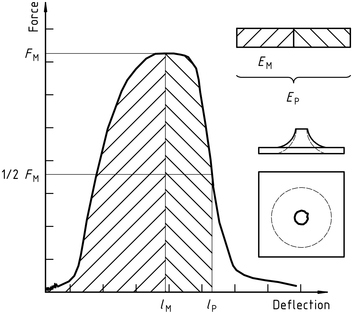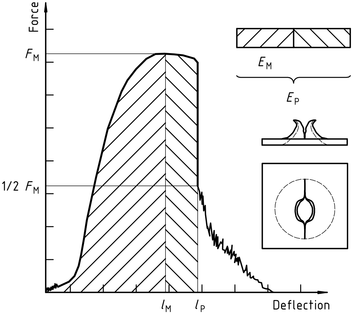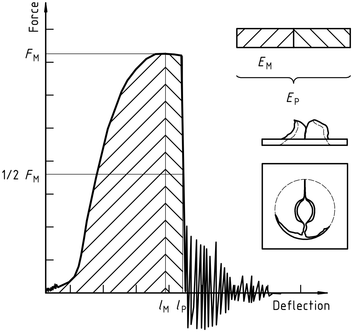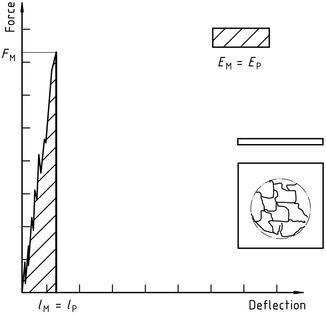ไอเอสโอ 6603-2-2000 “พลาสติก – การหาพฤติกรรมการกระแทกของพลาสติกแข็ง – ส่วนหนึ่ง 2: การทดสอบแรงกระแทกของเครื่องมือ”
การแนะนำ
ไอเอสโอ (องค์การระหว่างประเทศเพื่อการมาตรฐาน) เป็นพันธมิตรระดับโลกของหน่วยงานมาตรฐานแห่งชาติ (สมาชิกของไอเอสโอ). การพัฒนามาตรฐานสากลมักดำเนินการผ่านคณะกรรมการด้านเทคนิคของไอเอสโอ. สถาบันสมาชิกแต่ละแห่งที่สนใจในเรื่องที่มีการจัดตั้งคณะกรรมการด้านเทคนิคมีสิทธิที่จะเป็นตัวแทนในคณะกรรมการนั้น ๆ. องค์กรภาครัฐและเอกชนระหว่างประเทศที่ประสานงานกับ ISO ก็มีส่วนร่วมในงานนี้เช่นกัน. ISO ทำงานอย่างใกล้ชิดกับ International Electrotechnical Commission (ไออีซี) ในทุกเรื่องของมาตรฐานไฟฟ้า.
มาตรฐานสากลจัดทำขึ้นตามกฎที่กำหนดในส่วน 3 ของคำสั่ง ISO/IEC.
ร่างมาตรฐานสากลที่คณะกรรมการด้านเทคนิครับรองจะถูกเผยแพร่ไปยังองค์กรสมาชิกเพื่อการลงคะแนนเสียง. การตีพิมพ์ที่เป็นมาตรฐานสากลต้องได้รับอนุมัติอย่างน้อย 75% ของสถาบันสมาชิก.
โปรดทราบว่าองค์ประกอบบางส่วนของ ISO นี้ 6603 อาจจะเป็นเรื่องของสิทธิบัตรก็ได้. ISO จะไม่รับผิดชอบในการระบุสิทธิบัตรดังกล่าวบางส่วนหรือทั้งหมด.
ที่ได้มาตรฐานสากล ISO 6603-2 ได้รับการพัฒนาโดยคณะกรรมการด้านเทคนิค ISO/TC 61, พลาสติก, คณะอนุกรรมการ สค 2, Mechanical Properties.
ไอเอสโอ 6603-2-2000 “พลาสติก – การหาพฤติกรรมการกระแทกของพลาสติกแข็ง – ส่วนหนึ่ง 2: การทดสอบแรงกระแทกของเครื่องมือ”
ฉบับพิมพ์ครั้งที่สองยกเลิกและแทนที่ฉบับพิมพ์ครั้งแรก (ไอเอสโอ 6603-2:1989), ซึ่งได้รับการแก้ไขทางเทคนิคแล้ว.
ไอเอสโอ 6603 ประกอบด้วยส่วนต่าง ๆ ดังต่อไปนี้, under the general heading Plastics – การหาพฤติกรรมการกระแทกของพลาสติกแข็ง:
– ส่วนหนึ่ง 1: การทดสอบแรงกระแทกแบบไม่ใช้เครื่องมือ
– ส่วนหนึ่ง 2: Instrumented impact testing
Appendices A to E of this part of ISO 6603 are for information purposes only.
1 พิสัย
ส่วนนี้ของ ISO 6603 specifies a test method for determining the puncture impact properties of rigid plastics in the form of flat specimens using instruments that measure force and deflection. This applies if a force-deflection or force-time plot recorded at a nominal constant firing pin speed is necessary to characterize impact behavior in detail.
ไอเอสโอ 6603-1 can be used if ISO 6603-1 is sufficient to characterize the impact behavior of plastics by an impact failure energy threshold based on many samples.
The purpose of this part of ISO 6603 is not to explain the mechanisms that occur at each particular point on the force-deflection chart. These explanations are the task of scientific research.
Note also Article 1 of ISO 6603-1:2000.
ไอเอสโอ 6603-2-2000 “พลาสติก – การหาพฤติกรรมการกระแทกของพลาสติกแข็ง – ส่วนหนึ่ง 2: การทดสอบแรงกระแทกของเครื่องมือ”
2 การอ้างอิงเชิงบรรทัดฐาน
เอกสารเชิงบรรทัดฐานต่อไปนี้มีบทบัญญัติว่า, โดยการอ้างอิงในที่นี้, ถือเป็นข้อกำหนดในส่วนนี้ของ ISO 6603. สำหรับการอ้างอิงลงวันที่, การแก้ไขหรือแก้ไขสิ่งพิมพ์เหล่านี้ในภายหลังจะไม่มีผลใช้บังคับ. อย่างไรก็ตาม, คู่สัญญาในข้อตกลงตามส่วนนี้ของ ISO 6603 ได้รับการสนับสนุนให้ตรวจสอบความเป็นไปได้ของการใช้เอกสารเชิงบรรทัดฐานต่อไปนี้เวอร์ชันใหม่. สำหรับการอ้างอิงที่ไม่ระบุวันที่, ให้ใช้เอกสารการตั้งค่ามาตรฐานฉบับใหม่ที่อ้างถึง. สมาชิกของ ISO และ IEC จะรักษาทะเบียนมาตรฐานสากลที่ถูกต้องในปัจจุบัน.
ไอเอสโอ 2602:1980, Statistical interpretation of test results – mean estimation – confidence intervals.
ไอเอสโอ 6603-1:2000, พลาสติก. Determination of puncture impact behavior of rigid plastics. ส่วนหนึ่ง 1: Non-instrumental impact tests.
3 ข้อกำหนดและคำจำกัดความ
For this part of ISO 6603, เป็นไปตามข้อกำหนดและคำจำกัดความต่อไปนี้.
3.1 Impact velocity
The speed of the firing pin relative to the support at the time of impact
บันทึก 1: The impact velocity is expressed in meters per second (นางสาว).
3.2 Force F
The force exerted by the firing pin on the specimen in the direction of impact
บันทึก 1: Force is expressed in Newtons (เอ็น).
3.3 Deflection l
The relative displacement between the firing pin and the specimen holder begins with the first contact between the firing pin and the specimen
บันทึก 1: Deflection is expressed in millimeters (มม).
3.4 Energy
The energy expended to deform and penetrate the specimen up to the deflection L
ไอเอสโอ 6603-2-2000 “พลาสติก – การหาพฤติกรรมการกระแทกของพลาสติกแข็ง – ส่วนหนึ่ง 2: การทดสอบแรงกระแทกของเครื่องมือ”
บันทึก 1: Energy is expressed in joules (เจ).
บันทึก 2: The energy is measured as the integral of the force-deflection curve from the point of impact to the deflection l.
3.5 Maximum Power FM
The test process occurs with maximum force
บันทึก 1: Maximum force is expressed in Newtons (เอ็น).
3.6 Deflection lm at maximum force
Deflection at maximum power FM
บันทึก 1: Deflection under maximum force is expressed in millimetres (มม).
3.7 Energy to maximum power
The energy expended at maximum force reaches deflection lM
บันทึก 1: The most powerful energy is expressed in joules (เจ).
3.8 Puncture deflection lP
The force is reduced to half the deflection of the maximum force F M
See Figures 1-4 and Note 3.9.
บันทึก 1: Puncture deflection is expressed in millimeters (มม).
ไอเอสโอ 6603-2-2000 “พลาสติก – การหาพฤติกรรมการกระแทกของพลาสติกแข็ง – ส่วนหนึ่ง 2: การทดสอบแรงกระแทกของเครื่องมือ”
3.9 Puncture Energy
The energy consumed until the puncture deflects lP
See Figures 1-4 and note 2.
บันทึก 1: The puncture energy is expressed in joules (เจ).
บันทึก 2: When testing hard materials, a probe mounted at a distance from the impact tip can record the friction force acting between the cylindrical part of the firing needle and the piercing material. The corresponding friction energy should not be included in the piercing energy, so the piercing energy is limited to that deflection, where the force drops to half of the maximum force FM.
3.10 Impact Failure
The mechanical properties of the material to be measured may be of one of the following types (เห็นโน๊ต) :
| ก) | YD | yIELDING(Zero slope at maximum force), followed by DEEP drawing |
| ข) | YS | (Zero slope at maximum force) then (at least partially) the S table cracks |
| ค) | yu | yIELDING(Zero slope at maximum force) and then u unstable cracking |
| ง) | New function | no yielding |
ไอเอสโอ 6603-2-2000 “พลาสติก – การหาพฤติกรรมการกระแทกของพลาสติกแข็ง – ส่วนหนึ่ง 2: การทดสอบแรงกระแทกของเครื่องมือ”
บันทึก 1: A comparison of Figures 2 และ 3 shows that puncture deflection lP and puncture energy EP are the same for failure types YS and YU. As shown in Figure 4, in the case of failure type YU, the deflection and energy have the same values at the maximum and at the puncture. For complex behaviour, see annex A.
รูป 1 – An example of a force-deflection diagram of the typical appearance of a specimen after yielding (zero slope at maximum force) followed by deep drawing and testing (using lubrication)

รูป 2 – Example force-deflection diagram of failure by yield (zero slope at maximum force), followed by steady crack growth, and typical appearance of the specimen after testing (using lubrication)

รูป 3 – Example force-deflection diagram of failure through yield (zero slope at maximum force) and the typical appearance (lubrication) of the specimen after testing

Note the natural vibration of the force detector can be seen after the unstable cracking (firing pin and weighing sensor).
รูป 4 – Example force-deflection diagram of unyielding failure followed by unstable crack propagation and typical appearance of the specimen after testing (using lubrication)

ไอเอสโอ 6603-2-2000 “พลาสติก – การหาพฤติกรรมการกระแทกของพลาสติกแข็ง – ส่วนหนึ่ง 2: การทดสอบแรงกระแทกของเครื่องมือ”
เฉพาะส่วนข้อมูลมาตรฐานเท่านั้นที่เปิดเผยต่อสาธารณะ. หากต้องการดูเนื้อหาทั้งหมด, คุณต้องซื้อมาตรฐานผ่านช่องทางการ.
